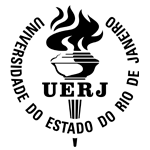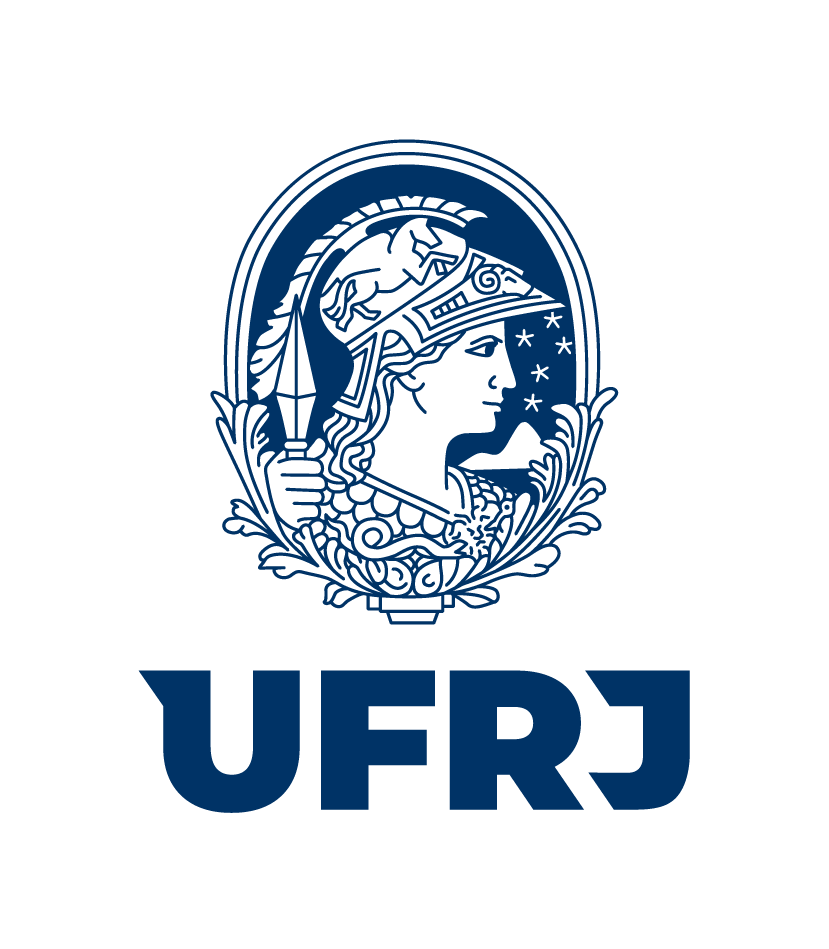Guia Para Realizar uma Revisão Sistemática de Literatura
DOI:
https://doi.org/10.18264/eadf.v9i1.748Resumo
Muitos pesquisadores não são bem treinados na realização de uma revisão de literatura autônoma, um documento acadêmico que resume e sintetiza na sua totalidade o conhecimento anterior de um corpo de pesquisa. Numerosos guias que existem para pesquisa em sistemas de informação (SI) concentram-se somente em certas partes do processo; poucos abrangem todo o processo. Este artigo apresenta uma metodologia rigorosa e padronizada para a revisão sistemática de literatura (também chamada de revisão sistemática) para pesquisadores em SI. Este guia abrangente amplia a metodologia básica das ciências da saúde e outros campos com numerosas adaptações para atender às necessidades de campos metodologicamente diversos, como a pesquisa em SI, especialmente aqueles que envolvem, incluem e sintetizam estudos quantitativos e qualitativos. Além disso, este guia fornece muitos exemplos da pesquisa em SI e referências a guias com mais detalhes úteis para a realização de uma revisão de literatura rigorosa e valiosa. Embora seja adaptado à pesquisa em SI, é suficientemente amplo para ser aplicável e valioso para pesquisadores de qualquer campo das ciências sociais.
Tradução de: OKOLI, Chitu.
A guide to conducting a standalone systematic literature review. Communications of the Association for Information Systems, v. 37, n. 43, p. 879?910, nov. 2015. Disponível em: <http://aisel.aisnet.org/cais/vol37/iss1/43/>.
Autorizada pela Association for Information Systems - Copyright © 2015
Downloads
Referências
ALAVI, M. & CARLSON, P. A review of MIS research and disciplinary
development. Journal of Management Information Systems, v. 8(4), p. 45-62, 1992.
ALAVI, M. & JOACHIMSTHALER, E. A. Revisiting DSS implementation research: a meta-analysis of the literature and suggestions for researchers. MIS Quarterly, v. 16(1), p. 95-116, 1992.
ALAVI, M. & LEIDNER, D. E. Review: knowledge management and knowledge management systems: conceptual foundations and research issues. MIS Quarterly, v. 25(1), p. 107-136, 2001.
ALIAS, M.; ZURINAH, C.; REISKA, A. J.; ÅHLBERG, M. & NOVAK, J. D. (2008). Concept mapping: A tool for creating a literature review. Proceedings of the 3rd International Conference on Concept Mapping. 2008.
ALLEN, N.; ATKINSON, D.; MORGAN, M.; MOORE, T. & SNOW, C. What experienced collaborators say about collaborative writing. Journal of
Business and Technical Communication, v. 1(2), p. 70-90, 1987.
ANONYMOUS. Gray literature? forces new role on librarians (sidebar). Chemical & Engineering News, v. 76(20), n. 12, 1998.
BACHARACH, S. B. Organizational theories: Some criteria for evaluation.
Academy of Management Review, v. 14(4), p. 496-515, 1989.
BANDARA, W.; FURTMUELLER, E.; GORBACHEVA, E.; MISKON, S. &
BEEKHUYZEN, J. Achieving rigor in literature reviews: insights from qualitative data analysis and tool-support. Communications of the Association for Information Systems, v. 37, p. 154-204, 2015.
BARBOUR, R. S. Checklists for improving rigor in qualitative research: A case of the tail wagging the dog? British Medical Journal, v. 322(7.294), p. 1.115-1.117, 2001.
BEM, D. J. Writing a review article for Psychological Bulletin. Psychological Bulletin, v. 118, p. 172-172, 1995.
BOOTE, D. N. & BEILE, P. Scholars before researchers: On the centrality of the dissertation literature review in research preparation. Educational Researcher, v. 34(6), p. 3-15, 2005.
BORENSTEIN, M.; HEDGES, L. V.; HIGGINS, J. P. T. & ROTHSTEIN, H. R. Introduction to meta-analysis. Chichester: Wiley, 2009.
BRAGGE, J.; RELANDER, S.; SUNIKKA, A. & MANNONEM, P. Enriching literature reviews with computer-assisted research mining. Case: Profiling group support systems research. 40th Annual Hawaii International Conference on System Sciences (v. 40, p. 243a-243a). New York: IEEE, 2007.
BRERETON, P.; KIKCHENHAM, B. A.; BUDGEN, D.; TURNER, M. & KHALIL, M. Lessons from applying the systematic literature review process within the software engineering domain. The Journal of Systems & Software, v.80(4), p. 571-583, 2007.
COTTON, J. L. & TUTTLE, J. M. Employee turnover: A meta-analysis and review with implications for research. Academy of Management Review, v. 11, p. 55-70, 1986.
DAWSON, K. & FERDIG, R. E. Commentary: Expanding notions of acceptable research evidence in educational technology: A response to Schrum et al. Contemporary Issues in Technology and Teacher Education, v. 6(1), p. 133-142, 2006.
DONOVAN, S. K. The importance of resubmitting rejected papers. Journal of Scholarly Publishing, v. 38(3), p. 151-155, 2007.
DUBÉ, L. & PARÉ, G. Rigor in information systems positivist case research: Current practices, trends, and recommendations. MIS Quarterly, v.27(4), p. 597-636, 2003.
DUNHAM, R. B. Shift work: A review and theoretical analysis. The Academy of Management Review, v. 2(4), p. 624-634, 1977.
ERDURAN, S.; SIMON, S. & OSBORNE, J. TAPping into argumentation: Developments in the application of Toulmins argument pattern for studying science discourse. Science Education, v. 88(6), p. 915-933, 2004.
FIGG, W. D.; DUNN, L.; LIEWEHR, D. J.; STEINBERG, S. M.; THURMAN, P. W.;
BARRET, J. C. & BIRKINSHAW, J. Scientific collaboration results in higher citation rates of published articles. Pharmacotherapy, v. 26(6), p. 759- 767, 2006.
FINK, A. Conducting research literature reviews: From the Internet to paper (2nd ed.). Thousand Oaks: Sage, 2005.
GREEN, B. F. & HALL, J. A. Quantitative methods for literature reviews. Annual Reviews in Psychology, v. 35(1), p. 37-54, 1984.
GREEN, R. & BOWSER, M. Observations from the field: Sharing a literature review rubric. Journal Of Library Administration, v. 45(1/2), p. 185-202, 2006.
GRIFFIN, R. W.; WELSH, A. & MOORHEAD, G. Perceived task characteristics and employee performance: A literature review. The Academy of Management Review, v. 6(4), p. 655-664, 1981.
HART, C. Doing a literature review: Releasing the social science research
imagination. Thousand Oaks: Sage, 1998.
HARTLEY, J.; PENNEBAKER, J. W. & FOX, C. Abstracts, introductions and discussions: How far do they differ in style? Scientometrics, v. 57(3), p. 389-398, 2003.
HELMERICKS, S. G.; NELSEN, R. L. & UNNITHAN, N. P. The researcher, the topic, and the literature: A procedure for systematizing literature searches. The Journal of Applied Behavioral Science, v. 27(3), p. 285-294, 1991.
H?TTNER, J. The genre(s) of student writing: Developing writing models.
International Journal of Applied Linguistics, v. 18(2), p. 146-165, 2008.
HYLAND, K. Self-citation and self-reference: Credibility and promotion in
academic publication. Journal of the American Society for Information Science and Technology, v. 54(3), p. 251-259, 2003.
JACCARD, J. & JACOBY, J. Theory construction and model-building skills: A practical guide for social scientists. New York: The Guilford Press, 2010.
JACSÓ, P. The dimensions of cited reference enhanced database subsets. Online Information Review, v. 31(5), p. 694-705, 2007.
JASPERSON, J.; CARTE, T. A.; SAUNDERS, C. S.; BUTLER, B. S.; CROES, H. J. P.& ZHENG, W. Review: Power and information technology research: A metatriangulation review. MIS Quarterly, v. 26(4), p. 397 459, 2002.
JOSEPH, D.; Ng, K. Y.; KOH, C. & ANG, S. Turnover of information technology professionals: a narrative review, meta-analytic structural equation modeling, and model development. Management Information Systems Quarterly, v. 31(3), n. 7, 2007.
KEEN, S. Strategies for disseminating qualitative research findings: Three
exemplars. Forum: Qualitative Social Research, v. 8(3), 2007. Retrieved from http://www.qualitativeresearch.net/index.php/fqs/article/view/285/625
KEKÄLE, T.; WEERD-NEDERHOF, P. de; CERVAI, S. & BORELLI, M. The dos and donts? of writing a journal article. Journal of Workplace Learning, v. 21(1), p. 71-80, 2009.
KITCHENHAM, B. & CHARTERS, S. Guidelines for performing systematic literature reviews in software engineering (Technical Report No.EBSE-2007-01). Keele: Keele University, 2007.
KITCHENHAM, B.; BRERETON, O. P.; BUDGEN, D.; TURNER, M.; BAILEY, J. & LINKMAN, S. Systematic literature reviews in software engineering ? a systematic literature review. Information and Software Technology, v. 51(1), p. 7-15, 2009.
KLEIN, H. K. & MYERS, M. D. A set of principles for conducting and evaluating interpretive field studies in information systems. MIS Quarterly, v. 23(1), p. 67-93, 1999.
LEE, D.; KANG, J.; MITRA, P.; GILES, C. L. & ON, B.-W. Are your citations clean? Communications of the ACM, v. 50(12), p. 33-38, 2007.
LEIDNER, D. E. & KAYWORTH, T. A review of culture in information systems research: Toward a theory of information technology culture conflict. MIS Quarterly, v. 30(2), p. 357-399, 2006.
LEVY, Y. & ELLIS, T. J. A systems approach to conduct an effective literature review in support of information systems research. Informing Science, v. 9, p. 181-212, 2006.
LIMM L. H. & BENBASAT, I. A theoretical perspective of negotiation support systems. Journal of Management Information Systems, v. 9(3), p.27-44, 1992.
MARAKAS, G. M.; YI, M. Y. & JOHNSON, R. D. The multilevel and multifaceted character of computer self-efficacy: Toward clarification of the construct and an integrative framework for research. Information Systems Research, v. 9(2), p. 126-163, 1998.
MAXWELL, J. A. Literature reviews of, and for, educational research: A
Commentary on Boote and Beiles scholars before researchers?. Educational Researcher, v. 35(9), p. 28-31, 2006.
MELVILLE, N.; KRAEMER, K. & GURBAXANI, V. Review: Information technology and organizational performance: An integrative model of IT business value. MIS Quarterly, v. 28(2), p. 283-322, 2004.
MORRISON, E. W. & BIES, R. J. Impression management in the feedback-seeking process: A literature review and research agenda. Academy of Management Review, v. 16(3), p. 522-541, 1991.
MYERS, P. M. D. Qualitative research in business & management
(illustrated edition). Thousand Oaks: Sage, 2008.
NORRIS, M.; OPPENHEIM, C. & ROWLAND, F. Finding open access articles using Google, Google Scholar, OAIster and OpenDOAR. Online Information Review, v. 32(6), p. 709-715, 2008.
OKOLI, C. A critical realist guide to developing theory with systematic literature reviews. SSRN eLibrary, 2012. Retrieved from http://ssrn.com/abstract=2115818.
OKOLI, C. & ABRAMSCH, K. A guide to conducting a systematic literature review of information systems research. SSRN eLibrary, 2010. Retrieved from http://ssrn.com/abstract=1954824.
PAWSON, R.; GREENHALGH, T.; HARVEY, G. & WALSHE, K. Realist review-a new
method of systematic review designed for complex policy interventions.
Journal of Health Services Research & Policy, v. 10, p. 21-34, 2005.
PETTICREW, M. & ROBERTS, H. Systematic reviews in the social sciences: A practical guide. Oxford: Blackwell, 2006.
PETTY, M. M.; McGEE, G. W. & CAVENDER, J. W. A meta-analysis of the relationships between individual job satisfaction and individual
performance. Academy of Management Review, v. 9(4), p. 712-721, 1984.
PICCOLI, G. & Ives, B. Review: IT-dependent strategic initiatives and sustained competitive advantage: A review and synthesis of the literature. MIS Quarterly, v. 29(4), p. 747-776, 2005.
PIERCE, J. L. & DUNHAM, R. B. Task design: A literature review. Academy of Management Review, v. 1(4), p. 83-97, 1976.
POPE, C.; MAYS, N. & POPAY, J. Synthesizing qualitative and quantitative health evidence: A guide to methods. New York: McGraw-Hill
International, 2007.
REMPEL, H. G. & DAVIDSON, J. Providing information literacy instruction to graduate students through literature review workshops. Issues in Science and Technology Librarianship. 2008.
RIDLEY, D. The literature review: A step-by-step guide for students. London:Sage, 2012.
ROBEY, D.; IM, G. & WARAMEH, J. D. Theoretical foundations of empirical research on interorganizational systems: Assessing past contributions and guiding future directions. Journal of the Association for Information Systems, v. 9(9), p. 497-518, 2008.
RODGERS, R. & HUNTER, J. E. The discard of study evidence by literature reviewers. The Journal of Applied Behavioral Science, v. 30(3), p. 329-345, 1994.
ROSENTHAL, R. Meta-analytic procedures for social research. Thousand
Oaks: Sage, 1991.
ROSENTHAL, R. Writing meta-analytic reviews. Psychological Bulletin, v. 118,
p. 183-183, 1995.
ROSENTHAL, R. & DIMATTEO, M. R. Meta-analysis: Recent developments in quantitative methods for literature reviews. Annual Reviews in Psychology, v. 52(1), p. 59-82, 2001.
ROUSSEAU, D. M.; MANNING, J. & DENYER, D. Evidence in management and organizational science: Assembling the fields full weight of scientific knowledge through syntheses. SSRN eLibrary, 2008. Retrieved from http://ssrn.com/abstract=1309606.
SHENKAR, O. & ZEIRA, Y. Human resources management in international joint ventures: Directions for research. Academy of Management Review, v.12(3), p. 546-557, 1987.
SINGH, G.; HADDAD, K. M. & CHOW, C. W. Are articles in top? management journals necessarily of higher quality? Journal of Management Inquiry, v. 16(4), p. 319-331, 2007.
STERNE, J. A. C.; EGGER, M. & SMITH, G. D. Investigating and dealing with publication and other biases in meta-analysis. BMJ, 323(7303), 42-46,2001.
SYLVESTER, A.; TATE, M. & JOHNSTONE, D. Beyond synthesis: Re-presenting heterogeneous research literature. Behaviour &
InformationTechnology, v. 32(12), p. 1-17, 2011.
TÉENI, D. Review: A cognitive-affective model of organizational communication for designing IT. MIS Quarterly, v. 25(2), p. 251-312, 2001.
THORNLEY, C. & GIBB, F. Meaning in philosophy and meaning in information retrieval (IR). Journal of Documentation, v. 65(1), p. 133-150, 2009.
TURNER, M.; KITCHENHAM, B.; BUDGEN, D. & BRERETON, O. P. Lessons learnt undertaking a largescale systematic literature review. In Proceedings of EASE (vol. 8), 2008.
VTSHENKA, V.; DAVIS, F. D. & MPRRIS, M. G. Dead or alive? The development, trajectory and future of technology adoption research. Journal of the Association for Information Systems, v. 8(4), p. 267-286, 2007.
VOM BROCKE, J.; SIMONS, A.; NIEHAVES, B.; RIEMER, K.; PLATTFAUT, R. &CLEVEN, A. Reconstructing the giant: On the importance of rigour in documenting the literature search process. In Proceedings of the 17th European Conference on Information Systems, 2009.
VOM BROCKE, J.; SIMONS, A.; RIEMER, K.; NIEHAVES, B.; PLATTFAUT, R. & CLEVEN, A. Standing on the shoulders of giants: Challenges and recommendations of literature search in information systems research. Communications of the Association for Information Systems, v. 37, p. 205-224, 2015.
WADE, M. & HULLAND, J. Review: The resource-based view and information systems research: Review, extension, and suggestions for future research. MIS Quarterly, v. 28(1), p. 107-142, 2004.
WEBSTER, J. & WATSON, R. T. Analyzing the past to prepare for the future: Writing a literature review. MIS Quarterly, v. 26(2), p. xiii-xxiii, 2002.
WINTER, S. J. & TAYLOR, S. L. The role of IT in the transformation of work: A comparison of postindustrial, industrial, and proto-industrial organization. Information Systems Research, v. 7(1), p. 5-21, 1996.
WOLFSWINKELl, J. F.; FURTMUELLER, E. & WILDEROM, C. P. M. Using grounded theory as a method for rigorously reviewing literature. European Journal of Information Systems, v. 22(1), p. 45-55, 2011.
WU, F. & WELD, D. S. Automatically refining the Wikipedia infobox ontology. In Proceedings of the 17th International Conference on World Wide Web (pp. 635-644). ACM, 2008.
Downloads
Publicado
Como Citar
Edição
Seção
Licença
Todos os artigos publicados na Revista EaD em Foco recebem a licença Creative Commons - Atribuição 4.0 Internacional (CC BY 4.0). Todas as publicações subsequentes, completas ou parciais, deverão ser feitas com o reconhecimento, nas citações, da Revista EaD em Foco como a editora original do artigo.













